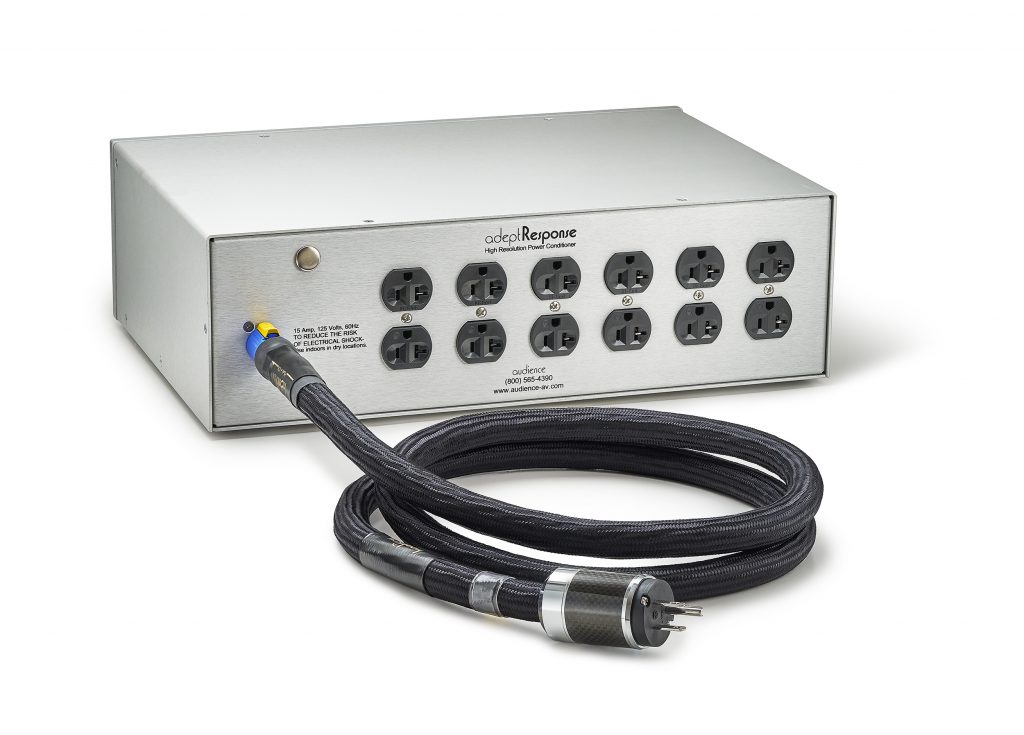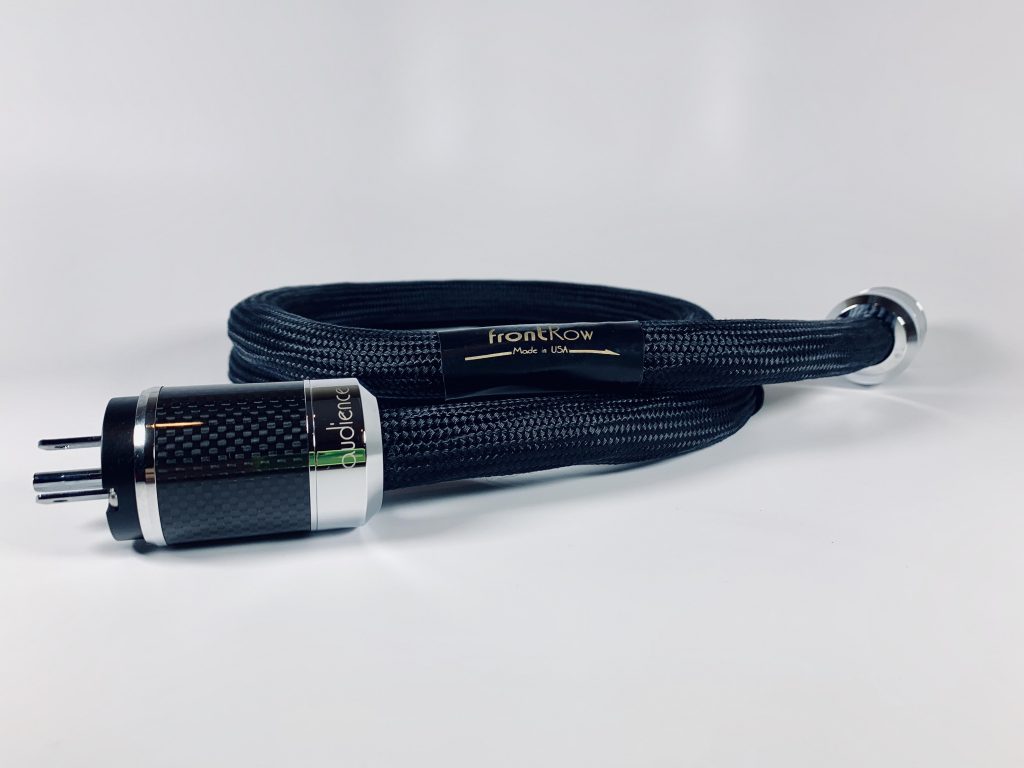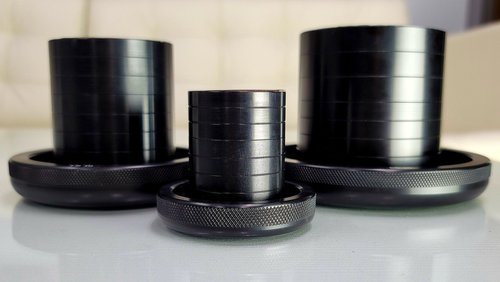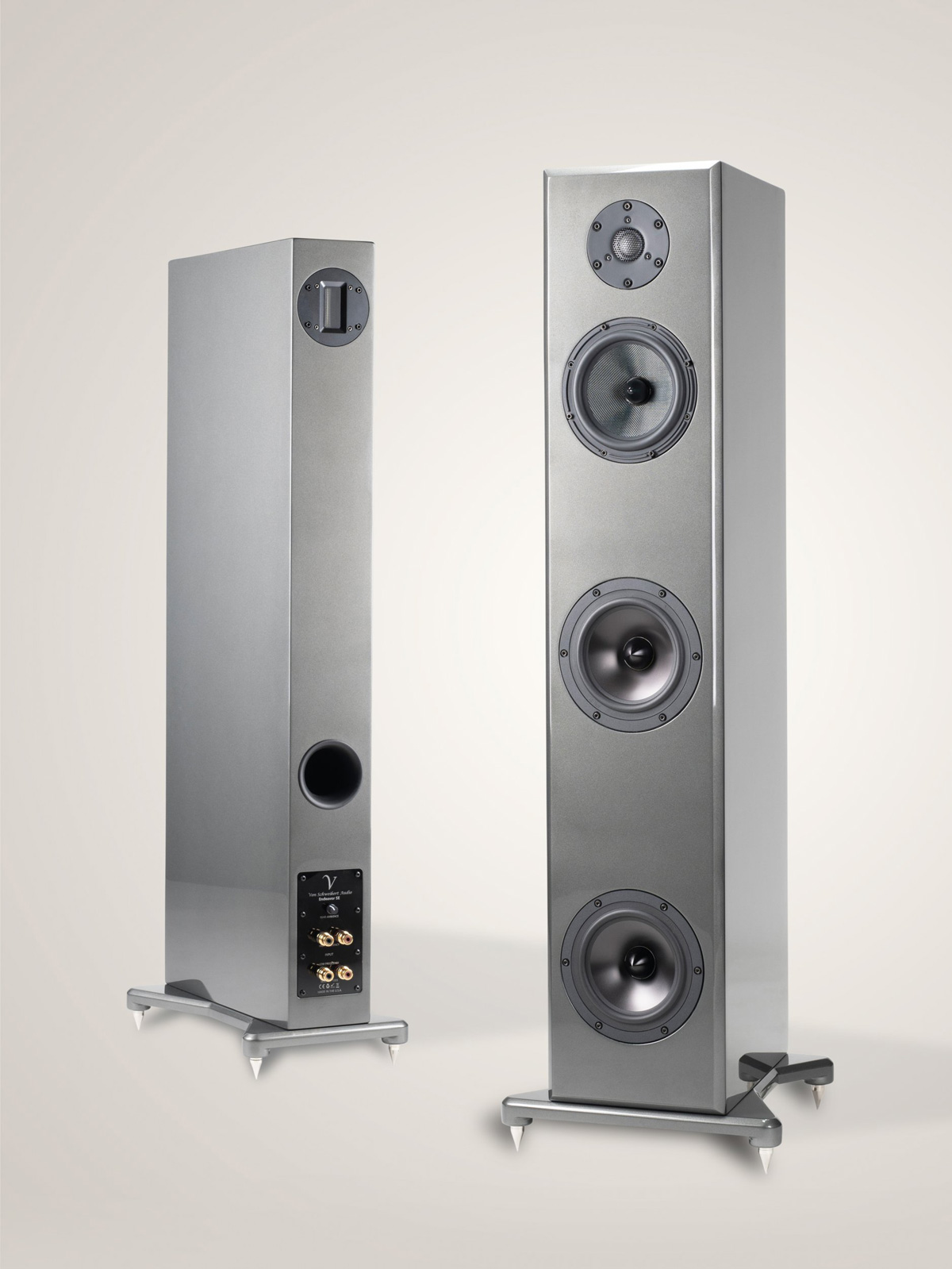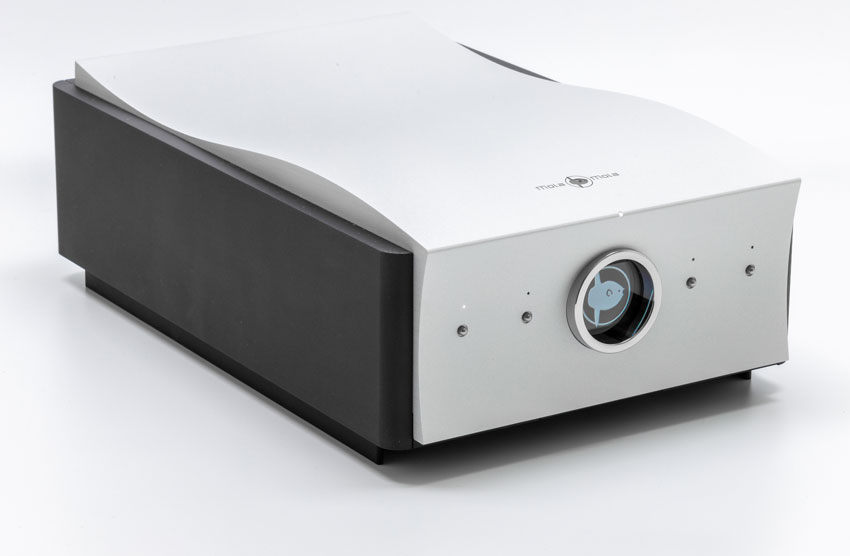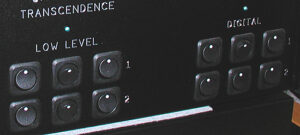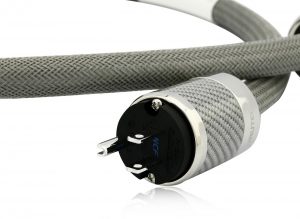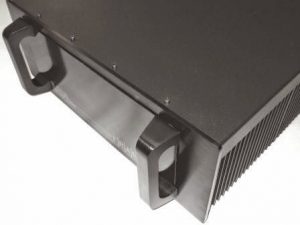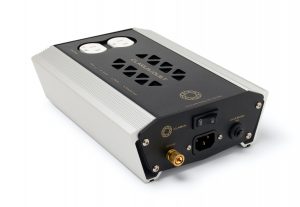Removing the Wool
A few months back, I received an out-of-the-blue text message from an old friend whom I've known for over 40 years. My friend messaged to express his dismay over what he saw as a serious lapse in judgement by his older brother, a life-long audiophile, accomplished amateur violinist, and highly successful business consultant. You see, the older brother had just dropped a pile of do-re-mi on a new audio-grade power conditioner, a purchase my friend, a man with two college-aged sons, considered a shameful waste of cash.
"How could he spend thousands of dollars on a damn power conditioner?" my friend quipped. To my friend's way of thinking, his normally thoughtful, fiscally conservative, highly discerning older brother had just dropped four figures on so much high-end snake oil. "Not to worry," I offered reassuringly. "Not only did your brother not waste his hard-earned cash on a pricey box of electronic jewelry, he just made one of the most sensible purchases an audiophile with a serious system can make."
After explaining the overall importance of clean power to my non-audiophile friend, and informing him that testing laboratories and hospitals also use similarly elaborate power conditioners to quiet their pricey measuring gear, he seemed marginally reassured. "A well-designed conditioner will not only deliver cleaner power to pricey components," I inveigled, "it will deliver sound quality improvements that even non-audiophiles can appreciate."
The truth is, I get these types of queries from friends and family all the time. To my amazement, a large segment of the audio fraternity also remains deeply skeptical about ancillary gear like cables and conditioners, not to mention the cost of the top players. I have great respect for the cable manufacturers and power conditioner designers out there that can make a decent living selling their wares. Convincing the audiophile doubting-Thomas legions, not to mention uninformed outsiders, that their products add real value to a given system is no easy task.
Pulling the Cotton Out of Your Ears
Hearing and appreciating everything that well-designed components like the AdeptResponse aR12-T4 Power Conditioner and the matching frontRow powerChord, Audience's new range-topping offerings and the subjects of this review, can do is a much simpler chore. Describing for you in a meaningful way how the Audience combo improves the sound of a given system hasn't proven quite as easy, at least for me, but that's the fun part. You see, unlike those components that reproduce musical signals (cartridges, phono stages, DACs, speakers), power conditioners are built, at least in theory, to do just one thing: provide all those other units with a steady stream of clean energy. Their job is not to transfer, process, or amplify the foundational musical signal, only to provide a pristine power foundation for those components that do.
In practice, far too many conditioners end up adding, not suppressing, dynamics-blunting, transient-blurring, phase-altering, life-robbing distortions that cloud the musical message. This makes it more, not less, difficult for careful listeners to suspend disbelief and imagine, even for an instant, that their favorite jazz trio, string quartet, or soprano coloratura has magically materialized into their listening room to dazzle, transfix, entertain, and inspire.
The Audience team attacks this "preserve the integrity of the musical message at all costs" mantra with fanatical devotion. For starters, the AdeptResponse aR12-T4 Power Conditioner / frontRow powerChord combo looks the part. The grained and satin anodized aluminum chassis of the conditioner (available in silver or black), the stunning build quality, and superior aesthetics scream luxury high-end gear. When listening room light sources strike the front of the conditioner at just the right angle, a swirling, almost wave-like pattern etched into the grained and satin anodized aluminum front panel radiates from, and surrounds, the magnetic circuit breaker switch outward to the farthest edges of the panel. The look is both aesthetically beguiling and sensuously seductive. The cable, beautifully built, stout enough to fit securely into the wall outlet, but flexible enough to snake behind cramped source components, exudes refinement.
The core technological innovations that lie at the heart of this exceptional conditioner / cable pair each suggests an equally uncompromising "take no prisoners" approach. Audience articulates its "music first" philosophy in unflinchingly straightforward terms. According to Audience, the "Adept Response High Resolution Power Conditioner…presents a low impedance power path while providing wide bandwidth noise reduction. Conventional power conditioners simply cannot approach the bandwidth/impedance characteristics of the Adept Response while still offering effective noise filtration and high voltage surge protection." This low impedance / wide bandwidth strategy is said to yield lightning-quick dynamic responsiveness but without any sense of dynamic compression or transient blurring.
To achieve this "do no harm" level of dynamic expressiveness, transient fidelity, and blinding transparency, the aR12-T4 eschews the use of the ubiquitous MOV (Metal Oxide Varistor), a passive two-terminal solid-state semiconductor used to protect both electrical and electronic circuits and devices. Because the MOV functions sacrificially, it wears down over time until it fails completely. Although its purpose is to clamp high voltage transients safely to ground instead of through your equipment, MOVs end up behaving like the world's worst capacitor across your power line, storing energy and releasing it as performance robbing, time-delayed distortion into your audio system. Dynamic expressiveness suffers, as does soundstage integrity, tonal focus, and timbral precision. For surge protection, the Adept Response employs a non-wearing type high voltage transient suppression system, an arrangement that Audience claims "is 100% invisible to the circuit until such time that a surge occurs. Therefore, unlike MOVs, it does not affect the sound in any way."
The power switch is equally fanatical in execution (not to mention utterly delightful to use). Here, Audience utilizes a very high-quality magnetic circuit breaker versus the industry standard thermal circuit breaker arrangement. Thermal circuit breakers increase in resistance as power demand increases, causing heat-dependent, resistive modulation of the incoming voltage. This effectively reduces the power available to your equipment on dynamic crests, stunting dynamic expressiveness and overall impact. Not surprisingly, a widely reported reason why many audiophiles eschew power conditioning of any sort owes to precisely this tendency of many conditioners to "flatten" dynamics peaks and truncate dynamic elasticity.
The aR12-T4 also performs partial power factor correction, something I did not realize when I first agreed to review the unit. This feature restores natural dynamics by enhancing the phase integrity of the AC voltage and current, allowing for a more efficient transfer of power. A bank of Aura-TR Teflon Capacitors ensures that there is always enough juice on hand to drive even the most demanding amps.
Lastly, each of the 12 outlets is individually filtered then double-filtered from every other outlet providing maximum "component to component" isolation. For this review, I went so far as to plug my Kronos Sparta 0.5 into the aR12-T4, a move I should note that many turntable manufacturers frown upon, but which yielded notable improvements in musical elasticity, timbral purity, depth of tone, and micro-dynamic fluidity.
Like the conditioner, the frontRow powerChord utilizes bleeding-edge technologies from head to tail. The powerChord's individual internal conductors are comprised of all new, modified 99.9999% pure Continuous Cast Copper, 38 strand, 6 bundle, 14-gauge wires. The aggregate gauge of the frontRow powerChord is 10-AWG. According to the manufacturer, "…these wires are combined and laid out in a specific geometry and spacing, providing the least amount of magnetic inductance and interaction between hot, neutral, and ground conductors. Each OCC conductor is covered in Pure Virgin Cross-linked polyethylene, with an excellent stable dielectric constant over all frequencies, and an unmatched natural quality when combined with OCC conductors in audio applications."
Audience terminates all frontRow powerChord OCC conductors with the new Audience Rhodium plated copper wall plugs and 15-amp or 20-amp IECs. These terminations ensure the highest quality and most secure connections from the AC source to your components, and provide extremely high signal transfer levels for both voltage and current. Please note that you can only pair the AdeptResponse aR12-T4 with an Audience power cable. In this configuration, the cable will come with a Neutrik-style termination mount that inserts into a special power receptacle located at the rear of the aR12.
Image courtesy of TweekGeek.com
From Silence, Sound
This technology-driven fanaticism pays handsome sonic dividends in the listening room. Inserted into a reference system that includes the mighty Mola Mola Kaluga / Makua amp-preamp suite, an AURALiC Aries G1 Wireless Streaming Transport feeding the superb onboard Makua DAC, the Kronos Sparta 0.5 turntable, a complete loom of Kubala-Sosna Sensation cables, plus Focal Sopra No. 1 and Von Schweikert Unifield 2 Mk. II compacts speakers, the Audience combo allowed my reference system to reproduce music with eerie quietude, impressive bass reach and impact, blinding transient precision, reference-level dynamic scaling, and class-leading tone and timbral expressiveness. One regret I have (amongst many) was that I did not mention the sonic contributions of the Audience power conditioner / power c(h)ord combo in my recent review of the Kubala-Sosna Sensation cable loom (HERE). As was true with the K-S loom, the moment I slipped the Audience combo into my reference system, I knew that I was in for a treat. To an arguably greater degree than even the mighty K-S Sensation cables, the Audience pairing excelled in four musically important categories: overall quietude or what I call "stillness," tone and timbral precision, low end power, extension, and tautness, and dynamic expressiveness.
The first quality, quietude or stillness, is one frequently discussed in audio reviews, but typically under the "black background" descriptor. I understand, at least in theory, what my fellow reviewers mean when they use the "black background" language to describe the absence of noise artifacts. Stated simply, tone colors, vocal and instrumental textures, and musical timbre appear, and sound to the ear as more vividly lifelike, palpable, and dynamically propulsive when portrayed against a "black" or utterly noiseless background.
By the same token, those audio components—particularly power conditioners—that effectively reduce (or vanquish outright) extraneous noises, distortions, phase anomalies, and the like, will better enable tonal colors, vocal and instrumental textures, and associated ambient details to sing in stark relief in the musical mix, as if projected from a silent (or inert) "black background."
But (and this is extremely important to remember), all those distortions, noise artifacts, and related distractions are, like the music itself, fluid not static quantities, meaning fluid in time, frequency, phase, amplitude, etc. By extension, I have argued before, and will reiterate the point here, that the descriptive language we use to qualify the absence of these distortions should, ideally, capture the fluid sonic environments within which these quantities manifest. In my view, the more accurate descriptive analogy then is not to "blackness" as the sonic absence of color-robbing, tone-bleaching, dynamic-suppressing distortions (and all the "steady" or "static" sonic implications that the term carries), but to background or systemic stillness.
Stated another way, by removing grit, grain, noise, phase distortions and the like to sonically marginal levels, thereby rendering inert the sonic jitter and associated detritus that normally clouds the underlying musical message, the Audience combo delivers the same type (and degree, if not more so) of detail-rendering stillness one appreciates in a finely rendered black and white photograph, or senses when one peers into the bottom of a clear and still lake or stream to marvel at the diversity of life lurking—and moving—just below the water's surface.
This means that in the listening room, music flows with unforced naturalness and liquidity, the conditioner / cable combo simply doing what the best components should: add as little to the musical signal as possible. The Audience suite's sheer quietude means that recordings with impact and genuine musical momentum sing with exceptional purity of tone, superb overall focus, and electrifying directness. John Coltrane's recently unearthed Both Directions at Once (Impulse) LP, the languidly introspective musings of pianist Bill Evans on my beloved Riverside LP Box Set, and Polish trumpeter Tomaz Stanko's 1999 release From the Green Hill (ECM), one of my desert island references, each bloom with a disarming grace, composure, control, and sheer musicality that I have never experienced in my listening room.
The transformative sonic and musical benefits that the Audience combo delivers are neither subtle nor limited to a single sonic metric. For example, on 89-year old Ahmad Jamal's late-in-life instrumental master-piece, Ballades (Jazz Village) (mostly solo piano tracks), the aging master's timelessly upbeat and imminently hummable "Poinciana" reverberates and shimmers in the listening room as a commanding, attention-grabbing physical presence, a neo-romantic marvel of nearly matchless improvisational beauty, and my vote for one of the best jazz recordings of 2019. When Jamal hammers his Steinway grand, a model that he has used off and on since 1964, at the bottom of the instrument's lower register, he does so with such thundering conviction that you can feel the low-end crunch churning in your stomach.
Image courtesy of Jazz Village Records
By rendering dynamic contrasts and bass reach and impact with such remarkable precision, the Audience combo's nearly unprecedented noiselessness simultaneously unearths fine sound-staging and ambient cues like a bloodhound. This means that one not only hears, but also intuits and feels, the sonic dimensions of the Paris-based recording studio where Jamal laid these tracks down.
Or take another prized recording in my collection, one that I frequently use to test high-end gear here at Casa Jeffries, the Shirley Horn Trio's late 1970s masterpiece A Lazy Afternoon (SteepleChase). To unpack the recording's hidden musical secrets, one's system must lay bare (but not clinically so) all the intricate tonal shadings, delicate timbres, and complex textures that Horn and her cohorts in crime, bassist Buster Williams and drummer Billy Hart, conjure. Taken collectively, these distinct elements create the captivating sense of musical action and forward momentum that makes this album special. The disc's closely-miked perspective notwithstanding, the Audience gear really allows this recording to breathe and bloom, the top-end air, the electrifying transient attack of Williams' bass, and the remarkably deep soundstage layering collectively conveying the touch, smell, and feel of an intimate jazz club tucked away in some smoke-filled Copenhagen basement.
System-wide Synergy
As I pointed out recently, the beguiling Mola-Mola electronics suite that I use as references (HERE), particularly the Kaluga mono block amps (demure class D devices that hit in the bass region like a Mike Tyson right hook), deftly reproduces the low end with near unparalleled impact, precision, and force (or at least as low, precise, and hard-hitting as my compact references will go). When plugged straight into the wall, with no conditioning whatsoever, the Mola Mola separates rank amongst the most preternaturally quiet, electro-mechanically noiseless, dynamically explosive components I have come across.
But, when fed, courtesy of the Audience gear, an essentially noiseless stream of clean, filtered then double-filtered, and power factor corrected protons and electrons, the sense of musical composure, quietude, bass heft and precision, and overall coherence improves by a considerable and "easy-to-appreciate" order of magnitude. The simple takeaway: even if you think that your reference system is quiet and that it effectively suppresses annoying and musically distracting electro-mechanical artifacts (meaning those artifacts that we are used to hearing routinely, and those that we only notice by their eradication) the Audience combo will force you to rethink that core proposition wholesale.
Image courtesy of Maurice Jeffries
One final system-matching consideration deserves mention. Except for the Audio Sensibility phono cable and the frontRow powerChord, all remaining system cables were either Kubala-Sosna Sensation models or top-end wires from Silnote Audio (at the start of the review). Regardless of the chosen loom, the improvements that I described above manifested consistently and repeatedly throughout the 4 to 5-month review cycle. This is good news for users that do not own a complete loom of Audience interconnect, digital, and speaker cables. Stated simply, you can, at least based on my experience, insert a T4 conditioner / frontRow powerChord combo into your existing reference setup and not have to scrap your existing cable runs.
Parting Thoughts
As should be obvious if you've read this far, I think that the Audience AdeptResponse aR12-T4 Power Conditioner and frontRow powerChord are the real deal. The pair justifies its not inconsiderable cost with cutting-edge technology, superb build quality, and exceptional sound. I would even go so far as to suggest that you consider foregoing that new cartridge, speaker, or amp upgrade if you don't already own a conditioner as invisibly transparent, eerily quiet, and dynamically elastic as the aR12-T4.
To prove the point, I spent the last month of this review evaluating the aR12-T4-fronted system using my 15-year old PSB M2 Platinum stand-mount loudspeakers, not my regular reference compacts. The M2s now sell used with their dedicated stands for around $800 / pair ($2500 when new). The cost of the rest of the system, including the aR12-T4, approaches $105K. Of the system, as currently configured, I will say only this: I could live with the M2s as my references, and for many more years to come, these on the end of a system fed by the Audience suite, and never, ever pine for something better.
Avoid auditioning the Audience AdeptResponse aR12-T4 Power Conditioner and frontRow powerChord at your risk. Together, they represent a towering sonic achievement. If wishes were horses, I'd send the Audience folks a check yesterday.
They are that good!
Cheers!
AdeptResponse aR12-T4 Power Conditioner
Retail: $11,400 (MSRP, includes as standard the Audience powerChord SE-i)
frontRow powerChord
Retail: $6300 (MSRP) when purchased with the AdeptResponse aR12-T4 Power Conditioner ($6700 when purchased separately)
Audience
120 N. Pacific Street., K-9
San Marcos, CA 92069
800.565.4390
Company contact: John McDonald, President
760.599.9611





